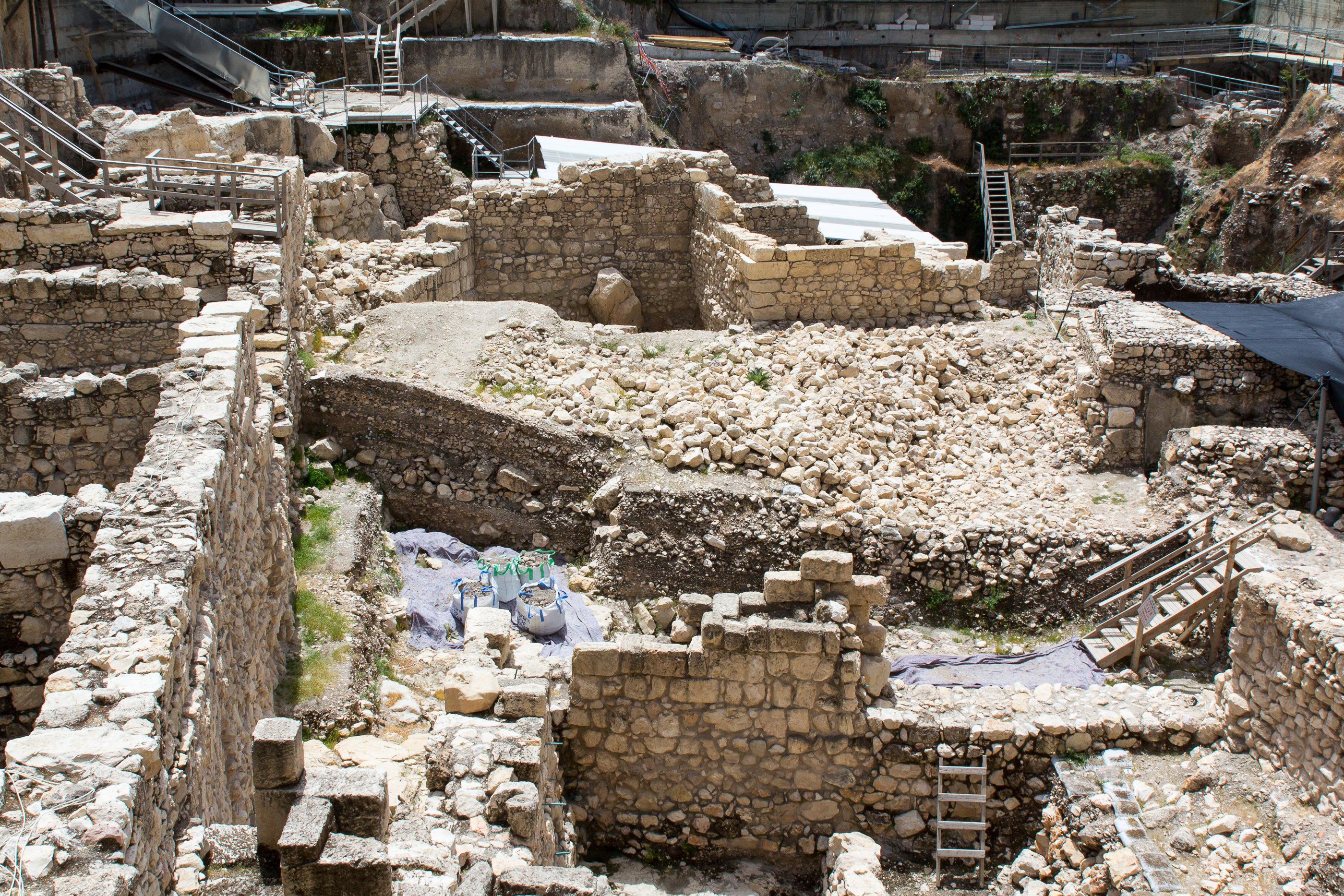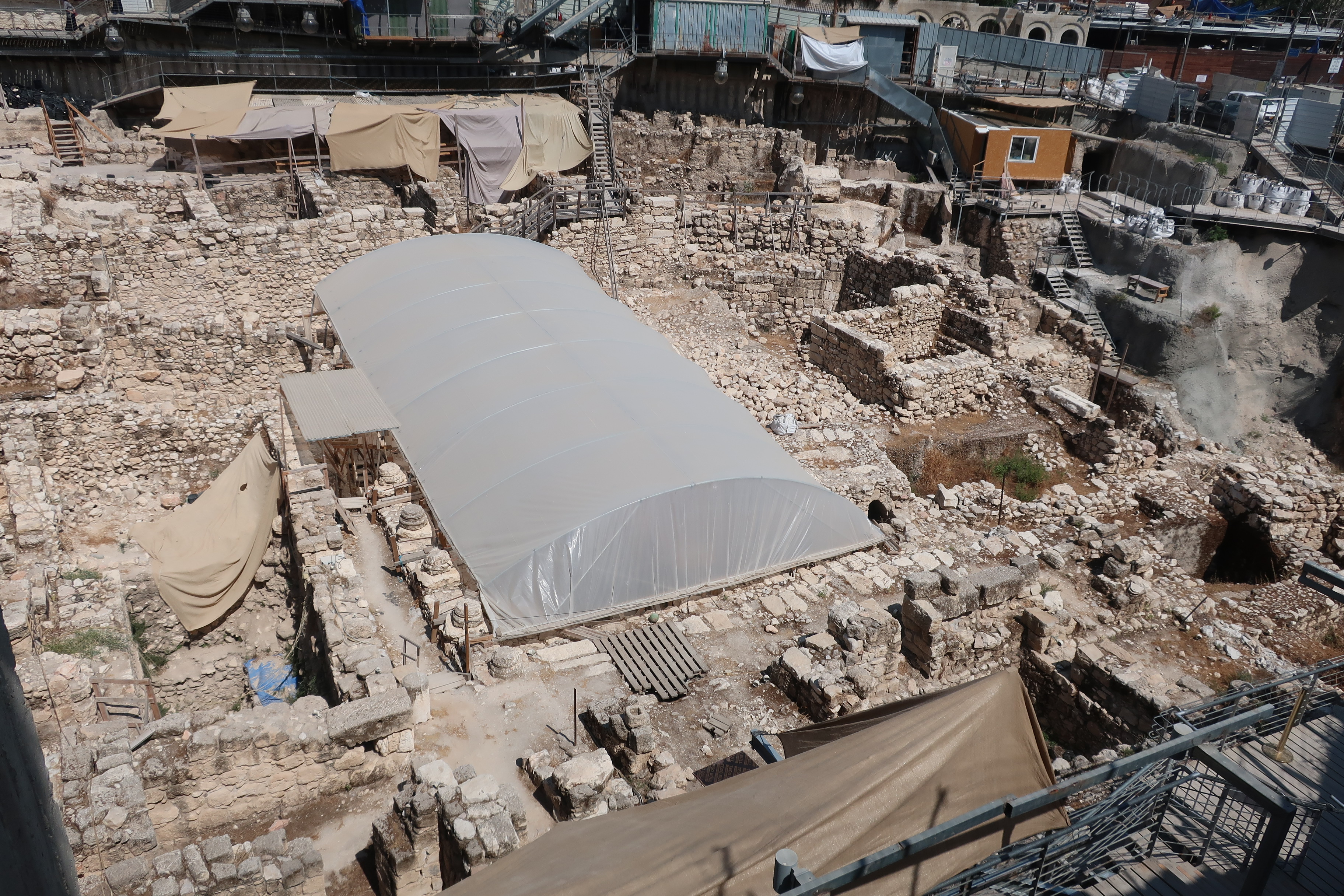Givati Parking Lot dig on:
[Wikipedia]
[Google]
[Amazon]
The Givati Parking Lot dig is an archaeological excavation located in Silwan. It is adjacent to the
Aug. 30, 2010, Jerusalem Post.
 In 2008 archaeologists uncovered a
In 2008 archaeologists uncovered a
"A Hoard Comprising Hundreds of Gold Coins was Uncovered in the Excavations the Israel Antiquities Authority is Conducting at the 'Giv'ati Car Park' in the City of David, in the Walls Around Jerusalem National Park"
, 22 December 2008. Accessed 23 June 2022. In 2010, the dig produced a small, Roman-era cameo of
Aug. 30, 2010, Ha'aretz. In November 2015, discovery of a tower and
In November 2015, discovery of a tower and 
City of David "City of David" is a biblical and religious epithet for the ancient city of Jerusalem.
It may also refer to:
* City of David (archaeological site) - an archaeological excavation associated with ancient Jerusalem
* Jerusalem Walls National Park
...
archaeological site. The dig was conducted by Doron Ben-Ami Doron Ben-Ami (born 1965; he, דורון בן עמי) is an Israeli archaeologist.
Ben-Ami earned his PhD at the Hebrew University of Jerusalem in 2003 where he was a member of the Institute of Archaeology as of 2009. He is the discoverer of the s ...
and Yana Tchekhanovets of the Israel Antiquities Authority
The Israel Antiquities Authority (IAA, he, רשות העתיקות ; ar, داﺌرة الآثار, before 1990, the Israel Department of Antiquities) is an independent Israeli governmental authority responsible for enforcing the 1978 Law of ...
and underwritten by the City of David Foundation."2,000 year-old cameo found in Jerusalem,"Aug. 30, 2010, Jerusalem Post.
History
Excavations of the former Givati Parking Lot began in 2007. Among the 2007 discoveries is an ancient building believed to have been the palace of Queen Helena of Adiabene. In 2008 archaeologists uncovered a
In 2008 archaeologists uncovered a hoard
A hoard or "wealth deposit" is an archaeological term for a collection of valuable objects or artifacts, sometimes purposely buried in the ground, in which case it is sometimes also known as a cache. This would usually be with the intention of ...
of 264 gold coins minted at the beginning of the reign of Byzantine emperor Heraclius
Heraclius ( grc-gre, Ἡράκλειος, Hērákleios; c. 575 – 11 February 641), was Eastern Roman emperor from 610 to 641. His rise to power began in 608, when he and his father, Heraclius the Elder, the exarch of Africa, led a revol ...
, between the years 610-613 CE, thus just before the Persian conquest of Jerusalem.Israel Antiquities Authority"A Hoard Comprising Hundreds of Gold Coins was Uncovered in the Excavations the Israel Antiquities Authority is Conducting at the 'Giv'ati Car Park' in the City of David, in the Walls Around Jerusalem National Park"
, 22 December 2008. Accessed 23 June 2022. In 2010, the dig produced a small, Roman-era cameo of
Cupid
In classical mythology, Cupid (Latin Cupīdō , meaning "passionate desire") is the god of desire, lust, erotic love, attraction and affection. He is often portrayed as the son of the love goddess Venus (mythology), Venus and the god of war Mar ...
. It is made from onyx
Onyx primarily refers to the parallel banded variety of chalcedony, a silicate mineral. Agate and onyx are both varieties of layered chalcedony that differ only in the form of the bands: agate has curved bands and onyx has parallel bands. The ...
. The cupid is in a "striking" blue on a dark brown ground, he has wings and curly hair. The round cameo would have been an insert in a piece of jewelry. Cupid’s left hand rests on an overturned torch, symbolizing death, so it was probably a mourning piece."Israel archeologists uncover 2,000-year-old cupid in City of David dig Israel Antiquities Authority says added inlaid semi-precious stone is of the 'Eros in mourning,' one of a group of visual motifs linked with mourning practices."Aug. 30, 2010, Ha'aretz.
 In November 2015, discovery of a tower and
In November 2015, discovery of a tower and glacis
A glacis (; ) in military engineering is an artificial slope as part of a medieval castle or in early modern fortresses. They may be constructed of earth as a temporary structure or of stone in more permanent structure. More generally, a glacis ...
identified as belonging to the Seleucid
The Seleucid Empire (; grc, Βασιλεία τῶν Σελευκιδῶν, ''Basileía tōn Seleukidōn'') was a Greek state in West Asia that existed during the Hellenistic period from 312 BC to 63 BC. The Seleucid Empire was founded by the ...
fortress known as the Acra was announced. According to archaeologists Doron Ben-Ami, Yana Tchekhanovets and Salome Dan Goor they had unearthed a complex of rooms and fortified walls they identified as the Acra. Finds include fortification walls, a watchtower measuring 4 by 20 meters, and a glacis. Bronze arrowheads, lead sling-stones and ballista stones were unearthed at the site, stamped with a trident characteristic to the reign of Antiochus IV Epiphanes
Antiochus IV Epiphanes (; grc, Ἀντίοχος ὁ Ἐπιφανής, ''Antíochos ho Epiphanḗs'', "God Manifest"; c. 215 BC – November/December 164 BC) was a Greek Hellenistic king who ruled the Seleucid Empire from 175 BC until his de ...
. These are indicative of the military nature of the site and the efforts to take it. The finds also included were coins from the reigns of Antiochus Epiphanes through Antiochus VII Sidetes
Antiochus VII Euergetes ( el, Ἀντίοχος Ευεργέτης; c. 164/160 BC129 BC), nicknamed Sidetes ( el, Σιδήτης) (from Side, a city in Asia Minor), also known as Antiochus the Pious, was ruler of the Hellenistic Seleucid Empir ...
, as well as a multitude of stamped Rhodian amphora
An amphora (; grc, ἀμφορεύς, ''amphoreús''; English plural: amphorae or amphoras) is a type of container with a pointed bottom and characteristic shape and size which fit tightly (and therefore safely) against each other in storag ...
handles.
Archaeological architect Leen Ritmeyer Leen Ritmeyer (b. 1945) is a Dutch-born archaeological architect who currently lives and works in Wales, after having spent 22 years (1967–89) in Jerusalem.
Career
Ritmeyer holds an M.A. in Conservation Studies from the Institute of Advanced Arch ...
disagrees with this identification. He claims the location and north-south orientation of the fortifications make them part of the defensive walls of what is known today as the City of David "City of David" is a biblical and religious epithet for the ancient city of Jerusalem.
It may also refer to:
* City of David (archaeological site) - an archaeological excavation associated with ancient Jerusalem
* Jerusalem Walls National Park
...
and described by Josephus
Flavius Josephus (; grc-gre, Ἰώσηπος, ; 37 – 100) was a first-century Romano-Jewish historian and military leader, best known for '' The Jewish War'', who was born in Jerusalem—then part of Roman Judea—to a father of priestly ...
as the Lower City. This Lower City was fortified by the Seleucids, who built the citadel known as Acra. But in Greek any fortification is called an ''acra'', this is a common noun, not a proper one, thus some confusion as to which fortification each specific ancient description is referring to: the refortified City of David, which Ritmeyer identifies as Josephus' southern part of the Lower City, or ''the'' Acra proper, the entirely new fortress. Ritmeyer quotes two primary sources - Antiquities of the Jews
''Antiquities of the Jews'' ( la, Antiquitates Iudaicae; el, Ἰουδαϊκὴ ἀρχαιολογία, ''Ioudaikē archaiologia'') is a 20-volume historiographical work, written in Greek, by historian Flavius Josephus in the 13th year of the ...
12:252–253 ("he built a citadel reek: Acrain the lower part of the city, for the place was high, and overlooked the temple") and 1 Maccabees 1:34 ("the agent's forces fortified David's City with a very strong wall and powerful towers, and it became their fortress.") Based on these sources, he says (a) there were two distinct fortified structures in the Lower City and (b) the new citadel, ''the'' Acra, was higher than the Temple, which it overlooked. Given that the new finds from the Givati Parking Lot are some 200 metres away from the Temple Mount of the Hellenistic period, and at a much lower elevation than the Mount, they could not be part of the Acra that "overlooked the temple".

See also
*Excavations at the Temple Mount
A number of archaeological excavations at the Temple Mount—a celebrated and contentious religious site in the Old City of Jerusalem—have taken place over the last 150 years. Excavations in the area represent one of the more sensitive areas ...
* Monumental stepped street (1st century CE)
*Jerusalem Water Channel The Jerusalem Water Channel is a central drainage channel of Second Temple Jerusalem, now an archaeological site in Jerusalem.
Purpose
It is a large drainage tunnel or sewer that runs down the Tyropoeon Valley and once drained runoff and waste wat ...
, running underneath the monumental stepped street
*Ophel Treasure
The Ophel treasure is a 1400 years old collection of 36 gold coins and a large gold medallion discovered in 2013 on the foot of Jerusalem's Temple Mount by archeologist Eilat Mazar. The medallion is engraved with Jewish symbols like a seve ...
, hidden right before the 614 Persian invasion, same as the Byzantine Givati hoard
* Silwan
References
{{reflist External linksGivati Parking Lot Dig 3D
City of David
Archaeological sites in Jerusalem